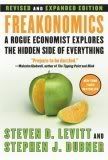Prosper's October Market Survey
Prosper has released their October market survey. This one has produced a great wealth of topics to explore, and I find that I have some contrasting opinions as well as insights with Chris Larson's market commentary. Now, where to begin.
While Prosper continues to remain on a rapid growth trajectory as indicated by year-to-date funded loan volume, which is up $48 million or 233% compared to year-to-date loan volume at this time last year, the percentage of loans going to subprime borrowers continues to decline.
That 233% rubs me wrong because Prosper's peak lending month was in March 07 with $8.1M in loans. October was a $6.4M month, a 21% decline over the peak month. This is not a rapid growth trajectory except when you use year to date calculations. October was up 18% over September ($6.4M vs $5.4M), but one data point is an anecdote, not a trend. Prosper took some hits between March and October with the collapsing sub-prime market and the change in the group rewards, so it's a rebuilding year. But the rapid trajectory comment is based on selective data criteria.
The bad news is that some subprime borrowers, such as young members of the American military who have not had an opportunity to build up a credit history or are caught in payday loan circles, may not be receiving a worthy chance of funding. Perhaps demand for these types of subprime loans will increase as a result of raising the rate cap on Prosper from 29% to 36%.
This is one of those truly insightful nuggets that slip through. Several folks were critical of the 36% max rate. Chris has explained Prosper's thinking: they wanted to provide an avenue that allowed lenders to capture the payday loan refinances. It does have the potential to help folks out of payday hell since 36% is much less than the >100% APR that the payday shops manage to pull off. This is very risky territory and it's hard to tell if any rate will sufficiently cover the danger of default, but the comment explains the thinking behind the increase.
Additionally, one of my favorite beefs with Chris' commentaries:
Although borrower rates and lender rates of return on Prosper are not formally tied to moves by the Fed, the dynamics of the broader credit markets, which have led to a string of rate cuts, clearly seem to be having an impact on the Prosper marketplace. For example, in October average borrower rates for all Prosper prime loans and Prosper Prime Select loans were 12.27% and 9.50%, respectively; down 0.39% and 0.65%, respectively, since the Fed rate cuts.
The Prosper loan marketplace dynamics are still rattling around like a jolt cola on a pogo stick. The changing ratio of lender bidding dollars chasing borrower loan dollars makes for a rapidly changing average interest rate (silly economics 101 and its supply and demand curves). In addition, Prosper introduced their estimated ROI tool half-way through October. This would've had a dramatic effect on the rates that lenders would be bidding. I think it's way premature to ascribe macroeconomic principles to small rate movements in Prosper loans.
And finally, Prosper mentioned that the top five lending states are (from first to last) California, Texas, New York, Florida, and Illinois. By coincidence, the 5 most populous states in the US are California, Texas, New York, Florida, and Illinois.







No comments:
Post a Comment